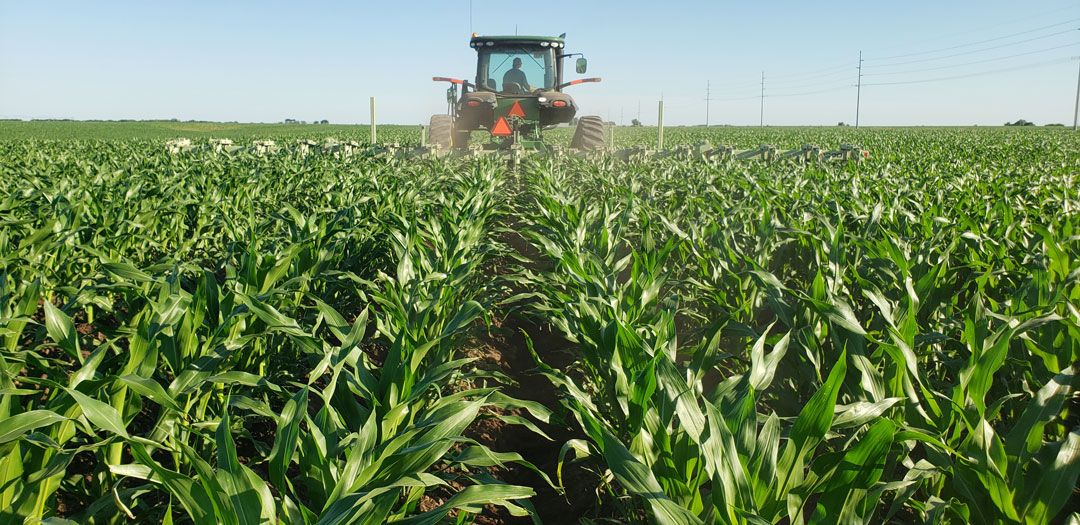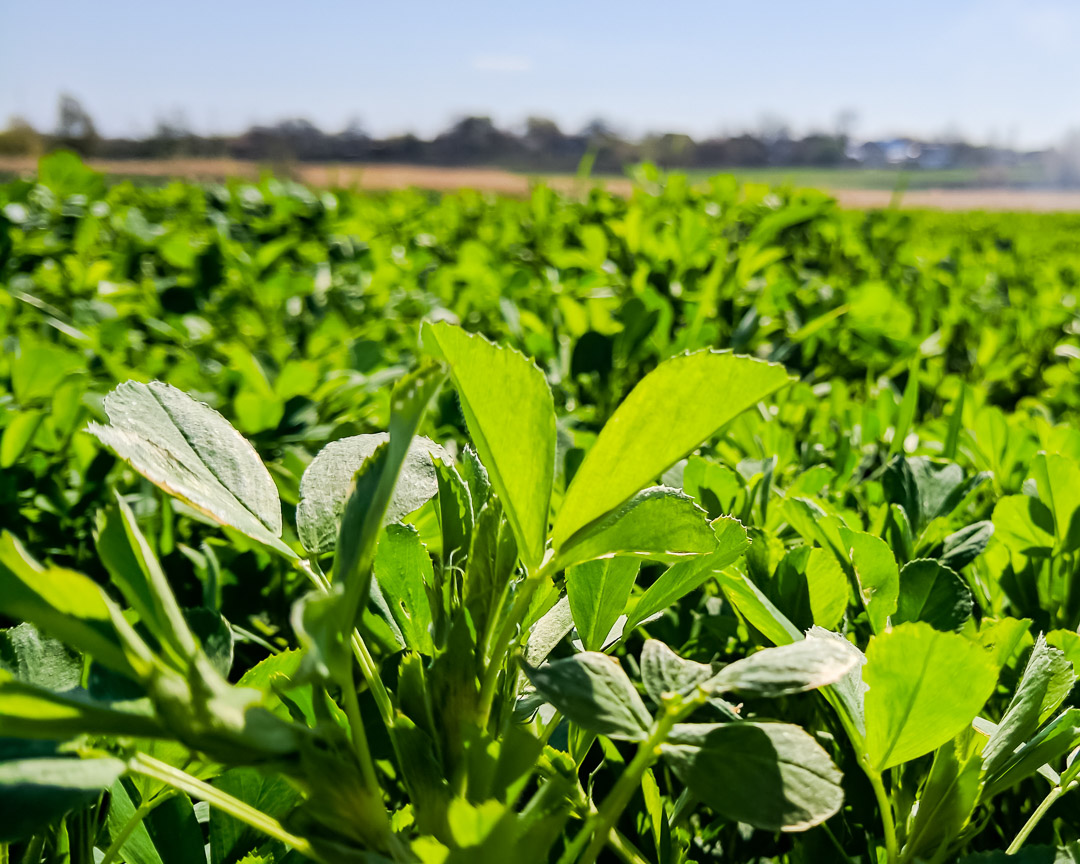- Published On: November 3, 2020
- Author: Steve Sinkula
Don’t make the one mistake common to all failed organic operations.That is, farming without a detailed and pressure tested crop plan.
Let’s be honest. It wasn’t so long ago that organic corn was selling for $12/bushel. Even if farmers made bad decisions, high prices hid their errors and oversights. Markets change, though, and we can no longer rely on premium prices alone to make ends meet. The hard truth is that we never could.
Instead, organic farmers need to rely on strong organic crop plans. A systems based approach to organic operations creates the potential for success this year and for generations to come.
Follow these 6 steps to create workable organic crop plans, then execute on them. You can make the necessary in-season adjustments along the way.
1. Know your costs and use them to mitigate risk
First, creating an organic crop plan requires knowing the costs for each field and across your whole farm. This includes equipment and inputs such as seed and manure. They also must factor in every potential action you take in a field, from planting to cultivating to rotary hoeing and harvest.
Without a doubt, it’s hard to know the true cost of everything on your farm. Don’t stress about it. Just gather and understand the data as best you can. You’ll use this information to make the right decisions for your operation, especially when it comes to mitigating risk.
For instance, let’s say you plan to spend $1 million this year. If your insurance covers $920,000, then your risk is $80,000. Based on the numbers, you can insure some crops at higher rates or adjust your crop rotation to spread out risk.
On B&B Irlbeck Farms, we grow organic peas and canola. We take on 100% of the risk, but we double crop with soybeans. As a result, three different crops generate revenue on one field. Our plan spreads the risk out considerably.
You also must consider the market. If contracts are higher for oats than barley, for instance, you can adjust your small grains plan. If you lock in your sale price before planting, you can lock in a profit.
2. Have realistic yield expectations
The second step to building a solid organic crop plan is knowing your potential revenue. Undoubtedly, this means having realistic yield expectations.
We’ve seen growers put 200+ bushel organic corn in their budget. And we can tell you that is not realistic. Not even close. Instead, you need to accept what is most likely to happen when you plant organic corn, especially if it’s not part of an agronomically sound rotation. Based on experience, we know it is often a better choice to do this: grow organic corn followed by a small grain cover crop plus another crop such as soybeans, and then go back to organic corn.
This again goes back to knowing your costs. You can use your data points to evaluate the risks and benefits of those different rotations. If you don’t know what yields are realistic, the AgriSecure MyFarm platform provides yield data based on your location. Furthermore, if you work with an account executive, they can help you determine what makes the most sense for your operation.
The platform also includes a financial summary feature. This gives you the chance to evaluate different scenarios based on crop prices, yields, and more.
3. Look at the long-term
Part of evaluating your risk is looking at the impact on your actual production history (APH). Your rotation should set up your farm so that your APH is improving for the future.
With this purpose in mind, farmers need to plan what they want to do in the upcoming season and also over the next couple years.
At B&B Irlbeck Farms, we plan our rotations out several years in advance. Looking ahead allows us to:
- Sell our crops for the best price
- Source inputs in advance, often for additional savings. For example, we can usually save 20-30% on chicken manure if we purchase it when chicken farms are too full.
- Ensure we stay balanced in our agronomy to build soil health over the long term.
- Avoid wild swings in labor and equipment costs, so we make sure not to do all of our fieldwork at once.
Consequently, we rely on the MyFarm platform to tie our planned costs to our expected revenue. Knowing the numbers helps ensure our organic crop plan returns a profit.
4. Utilize the MyFarm platform (or any platform) to evaluate and execute your plan
Many factors including costs, yield potential, and crop rotation go into a well-developed organic crop plan. Additionally, you’ll want to evaluate your capacity to execute the plan across all your fields over the crop season.
Once again, the MyFarm platform is a useful resource. The FieldGrid tool breaks down activities in each field to aid execution and ensure they’re doable. Using data from your field plans, the tool shows you the number of acres you have to run across for certain activities by month. Going further, it can also show the amount of time available to complete those tasks based on historical weather data for your region.
Importantly, the tool also points out potential labor and equipment crunches so you can avoid them. If you don’t have enough equipment and labor to get your fieldwork done in time, consider changing your crop mix. For example, adding small grains can increase your capacity because the fieldwork occurs at different times.
Once the plan is set, MyFarm helps you execute it. The Work Orders feature tells you what you need to do and when. You can update Work Orders from your phone right from the field. Your account executive can help you stay on track, too, by noting when you’re behind on your updates. They can also help evaluate fundamental shifts in your plans and recommend changes.
5. Make in-season adjustments based on data, not emotion
Being able to respond to changes is a key part of developing a good organic plan. Nothing in agriculture ever goes exactly as planned.
Consequently, having accurate data is critical. The MyFarm platform helps you gather and evaluate your information so you can understand what to do. It’s also much easier to adapt and mitigate downsides when things don’t go according to plan.
One example is delayed planting. When that happens, how are you going to adjust your plan? Can you accept the potential yield hit by planting later than the optimal dates? Or will you change to a different crop?
If you’ve decided on corn or soybeans, because it’s too late to put in a small grain, then you need to get insurance for that. The planning process forces you to think ahead and have multiple options in place.
6. Work with an advisor
If you’re new to organic farming, you probably don’t have a clear understanding of your costs. On the other hand, maybe you’re expanding your operation and need guidance on how to scale up.
It’s impossible to make the time and gain the expertise needed to manage every aspect of an organic operation. Working with a trusted advisor accelerates your learning curve. And you can make better decisions. What’s more, an advisor also save you the time so you can focus on what you do best.
Either way, it can be beneficial to utilize a tool like AgriSecure’s MyFarm platform. It is pre-populated with average costs for inputs and activities. It can also be updated as you determine your actual costs over time.
AgriSecure can help
We can help you take the emotion out of your decision making process. It’s unquestionably more profitable to rely on actual data points to build your organic crop plan. For similar reasons, having confidence in your data helps you make any necessary adjustments throughout the season.
Reach out to us today to learn more about the MyFarm platform. Let us show you how we can help you create an organic system plan that sets you up for success.
By Steve Sinkula, AgriSecure Founder and CEO, and Bryce Irlbeck, AgriSecure Founder and Owner of B&B Irlbeck Farms
Related Articles
-
Autonomous Farm Equipment Solves Organic Labor and Time Challenges
Ask an organic farmer about their biggest challenges and labor and time crunches are likely to be at the top. But autonomous farm equipment may soon be an option to help solve those issues. And help growers be more efficient in their operations, too. That’s what Craig Rupp, founder and CEO of Sabanto, has seen […]
-
Sustainable Success with Organic Row Crops
Zero tillage. Continuous cover. Rotational grazing. Several farming practices are regenerative in nature. But when it comes to the economics of sustainable success in agriculture, organics remains one of the strongest. Premiums for organic corn and soybeans have more than doubled their conventional counterparts’ prices over the last decade. This is hanks to high consumer […]
-
Cover Crops Bring Big Benefits to Organic Farms
We always stress the importance of a diverse crop rotation to achieve long-term organic success. But what if market opportunities for organic crops in your area are limited? How can you diversify your rotation with just a few cash crops? Answer: Cover crops. Even though you don’t sell them like cash crops, they can still […]
-
Know Your Numbers to Push Crop Profitability
Yield is often the top priority in farming. The truth, though, is that the highest yields will not necessarily result in the highest ROI. And this is especially the case for organic production. We know good execution results in the best yields, but the best way to maximize your crop profitability is to know your […]
-
6 Ways to Protect Organic Profits in Uncertain Times
Economic uncertainty hits all sectors of the agriculture industry, including organics. The good news? It’s possible to safeguard your organic profits. For a start, it’s even more important for organic farmers to focus on executing their operations really well. The better the execution, the better you can weather the market conditions and remain profitable. Here […]
Get in the know
Our newsletter, it’s a quick read. You’ll get industry news plus all the latest organic insights. Who doesn’t want that?






